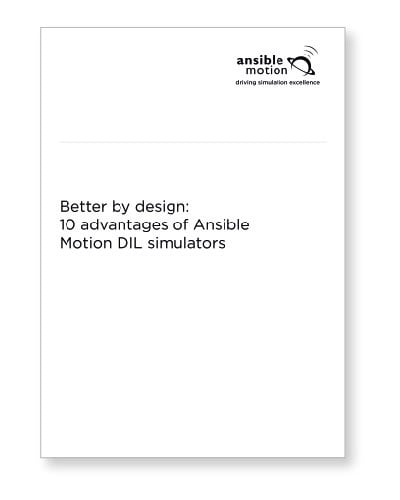 The notion of using a driving simulator to develop and validate vehicles has been around for many years. In recent years, the market has shifted dramatically to a new generation of simulators that is expected to be more versatile and effective, to help carmakers validate increasingly complex cars in the shortest time possible.
The notion of using a driving simulator to develop and validate vehicles has been around for many years. In recent years, the market has shifted dramatically to a new generation of simulators that is expected to be more versatile and effective, to help carmakers validate increasingly complex cars in the shortest time possible.
Design Solutions spoke to Ansible Motion engineer, Ian Haigh, about the motion developments that are a part of driving simulator designs, and why they have become critical in a changing automotive world.

With restrictions in time, the costs of real-world prototypes and a pandemic restricting travel to global test sites, simulation is proving much-needed capacity to support manufacturers and suppliers. So effective are these simulators, that more engineers now want to use driving simulators for testing their commodities, leading to more innovation in the sector. Companies like UK manufacturer Ansible Motion are developing ever more versatile simulators, such as the Delta series S3, a fully dynamic and immersive tool for virtual test driving.
Fully revealed earlier this year, the heart of this all-new driving simulator is the ability to provide a compelling motion experience. Whilst some some automotive driving simulators began using hexapod motion systems derived from aircraft simulators, Ansible Motion developed a novel motion solution engineered specifically for ground vehicles. Haigh explains:
The large machinery and payloads of hexapods had too much mechanical lag due to the mass and friction to be really useful for skilled drivers to employ.
The acceptable motion and visual latency of aerospace simulators tends to be in the 100 to 150 millisecond range, and we wanted to create something that was an order of magnitude below that. That's why we designed our Stratiform Motion System, or SMS. It's a scalable mechanism with multiple layers, each controlling specific axes of motion that are directly related to the six primary motion directions relevant for ground vehicle performance.
Read the full article on the Design Solutions website.



